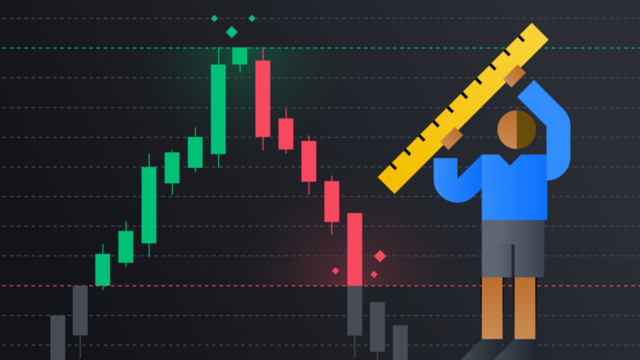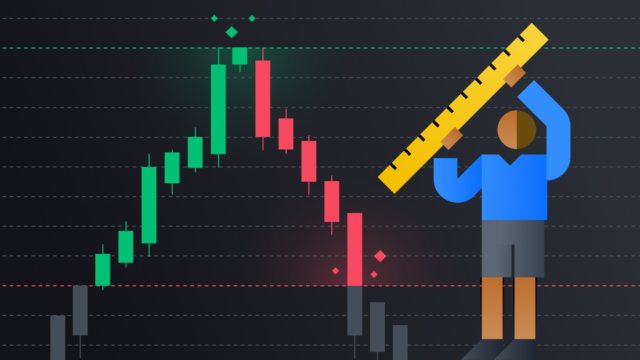
The world of investment has seen an unparalleled phenomenon in the last decade: the rise of Bitcoin and other cryptocurrencies. With its decentralized nature and potential for high returns, Bitcoin trading has become an attractive venture for both experienced traders and novice investors alike. However, its volatility, which can be a catalyst for profit, is also a source of significant risk.
This blog post aims to guide you through essential risk management strategies in Bitcoin trading, turning the tumultuous waves of cryptocurrency markets into navigable waters.
Understanding Bitcoin Market Volatility

The Bitcoin market’s volatility is notorious, setting it apart from traditional financial markets. The value of Bitcoin can rise or fall by over 20% within a day, as witnessed during the infamous “Crypto Crash” of 2017. This volatility stems from various factors, including regulatory news, technological advancements, and market sentiment. Despite its risks, this volatility also brings the potential for substantial profits if navigated correctly. It’s crucial to understand that Bitcoin trading is not a ‘get-rich-quick’ scheme but a strategic game that requires skill, knowledge, and patience.
Conducting Thorough Research
An indispensable element of risk management in Bitcoin trading is conducting thorough research. With an array of resources available, staying informed is a task within the reach of every investor. Noteworthy sources for market analysis include CoinMarketCap, CryptoCompare, and CoinDesk. In-depth understanding of key indicators like market cap, trading volume, and price trends can enable informed decision-making. It’s also vital to stay updated on news related to regulatory changes, technological advancements, and significant global events that could impact the Bitcoin market.
Setting Clear Investment Goals
Every successful journey begins with a destination in mind. Before venturing into Bitcoin trading, clearly define your investment objectives and risk tolerance. Are you looking for short-term gains, or are you investing for the long haul? Different trading strategies bear their unique risk profiles. Day trading can offer quick profits but comes with substantial risk due to market volatility. On the other hand, a long-term hold strategy (“HODLing”) typically involves less risk but requires patience and resilience to market fluctuations. Remember, keeping your expectations realistic and emotions in check is critical in successful Bitcoin trading. Having issues with setting clear investment goal means you would have use from professional outlets that operate in this domain such as https:/ethereumcode.app/.
Diversification and Portfolio Management
“Diversification” is an age-old adage in the investment world, and it applies to Bitcoin trading too. A diversified cryptocurrency portfolio—spread across Bitcoin, Ethereum, Litecoin, and other promising cryptocurrencies—can help manage risk by offsetting losses in one asset with gains in another. Consistently rebalancing your portfolio to align with your investment goals and market trends is equally crucial. Tools like Shrimpy and 3Commas can assist in effective portfolio management and rebalancing.
Implementing Stop-Loss and Take-Profit Orders

Protecting your investments in the roller-coaster ride of Bitcoin trading involves leveraging stop-loss and take-profit orders. A stop-loss order automatically sells your Bitcoin if the price falls to a level you set, thus limiting your losses. On the flip side, a take-profit order sells when Bitcoin reaches a certain price, locking in your gains. Setting these levels appropriately based on your risk tolerance and market analysis is paramount to mitigate potential losses.
Risk-Reward Ratio Assessment
The risk-reward ratio is a valuable metric in assessing potential trades, acting as a compass to guide your investment decisions. It’s a measure of the potential loss (risk) and potential profit (reward) in a trade. For instance, a risk-reward ratio of 1:3 implies you’re willing to risk $1 to make $3. Strive for trades with a favorable risk-reward profile; typically, a ratio greater than 1:2 is considered good. It’s important to remember that while higher rewards may be tempting, they often come with increased risk.
Using Position Sizing Techniques
Position sizing is another potent risk management tool in Bitcoin trading. It helps control the amount of capital invested in a single trade, ensuring you don’t put all your eggs in one basket. Risk per trade, a popular method, involves investing only a fixed percentage (like 2%) of your trading capital per trade. This strategy can limit potential losses during market downturns and prevent the devastation of your portfolio by a single poor trade.
Staying Informed About Security Risks
Trading Bitcoin carries not just market risks but also security risks. Protecting your digital assets is of utmost importance. Using hardware wallets to store your Bitcoin, enabling two-factor authentication, and regularly updating your software can provide enhanced security. Be aware of common scams in the crypto space, like phishing attempts and fake exchanges. Remember, if a deal sounds too good to be true, it probably is.
Emotional Discipline and Patience

The emotional whirlwind induced by the highs and lows of the Bitcoin market can lead to impulsive decisions. Emotional discipline is a trader’s best friend, helping avoid common pitfalls like panic selling and greedy buying. Patience, too, is a virtue in Bitcoin trading. It’s a marathon, not a sprint. Techniques like meditation, regular breaks, and maintaining a trading journal can help cultivate emotional balance and patience.
Practicing Risk Management Through Simulation
Before diving headfirst into Bitcoin trading, consider practicing through paper trading or demo accounts. These platforms offer a risk-free environment to develop your trading skills and strategies. By simulating real-world trading scenarios, they can help build confidence and familiarize you with market dynamics. Some reliable platforms for simulated Bitcoin trading include eToro, BitMEX, and Bitfinex’s paper trading account.
Seeking Professional Advice and Continuous Learning
Navigating the labyrinth of Bitcoin trading can be overwhelming. Don’t hesitate to seek guidance from financial advisors or experienced traders. More importantly, view your investment journey as a continuous learning process. Resources like books, podcasts, webinars, and online courses can help deepen your understanding of cryptocurrency markets, risk management techniques, and the underlying blockchain technology.
Bottom Line

Venturing into Bitcoin trading is akin to embarking on an exciting yet challenging journey. The key to surviving and thriving in this dynamic terrain lies in effective risk management. Implement these strategies and protect your hard-earned investments from the unpredictable winds of the Bitcoin market. Remember, knowledge is power, and a well-informed trader is a successful one. Happy trading!












